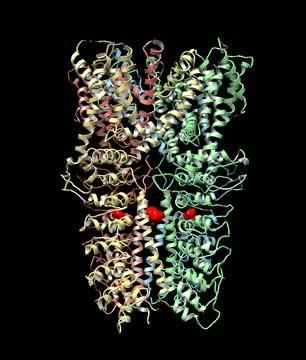Here’s Why You Wince at Wasabi
The structure will help researchers understand pain— and create drugs that could suppress it.
/https://tf-cmsv2-smithsonianmag-media.s3.amazonaws.com/filer/6a/fd/6afd3079-b50d-4c00-b0d5-e5cae6c45eeb/42-53456831.jpg)
If you like the spicy green paste that comes with sushi, you have been putting what's known as the "wasabi receptor" through its paces. The protein (formal moniker: TRPA1) is found in sensory nerve cells, and it's what causes you to tear up, wince or scratch in response to the green stuff—and to mustard, garlic, tear gas, bacterial infections, itchy irritants and possibly very, very cold weather. It might even be involved in hearing. Now, scientists at UC San Francisco reveal what it looks like on a molecular level, in 3-D.
Scientists have known about the wasabi receptor for nearly a decade. The new picture is thanks to a technique called electron cryo-microscopy, which has rapidly improved in recent years. The researchers froze the protein, bombarded it with electrons to take tens of thousands of pictures, and then stitched them together to create a 3-D image.
Formerly referred to jokingly as "blob-ology" for its poor resolution, cryo-microscopy provides a resolution of 4 angstroms—slightly larger than the diameter of a water molecule. Though less precise than X-ray crystallography, the method typically used to image proteins, it's faster and requires less of the protein in question to create a snapshot.
There are a few experimental drugs that target the wasabi receptor, and the image lets researches see the cleft in the protein where the drugs bind. That will aid in the development of new drugs. The picture may also help researchers get to the bottom of basics mechanisms of pain, says study author physiologist David Julius. The receptor is involved in invoking a range of feelings -- and researchers still aren't sure why an itch feels different from an ouch.
Here's the new view of the protein:
